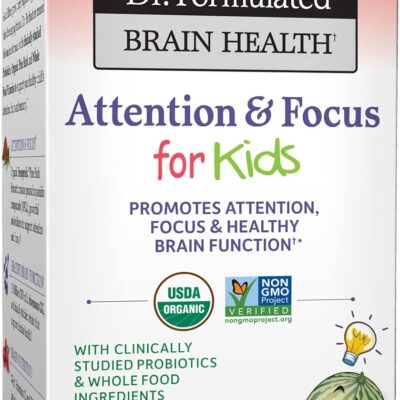In today’s fast-paced world, where quick meals often take precedence over our nutritional needs, fiber frequently gets overlooked. Yet, this powerful nutrient is essential for maintaining good health. Fiber not only aids digestion but also helps in weight management, lowers cholesterol levels, and regulates blood sugar. If you’re looking to boost your daily fiber intake naturally, you’re in luck! Here’s a guide to some of the top fiber-rich foods that can easily become part of your culinary routine.
Why Is Fiber Important?
Before diving into the delicious foods high in fiber, let’s understand why fiber is so crucial for our bodies. There are two types of fiber: soluble and insoluble. Soluble fiber dissolves in water and can help lower cholesterol and blood sugar levels. It’s found in foods like oats, beans, and fruits. Insoluble fiber, on the other hand, doesn’t dissolve in water but adds bulk to your stool, preventing constipation and promoting a healthy digestive system. You can find insoluble fiber in whole grains, nuts, and vegetables.
The recommended daily intake of fiber is about 25 grams for women and 38 grams for men. Unfortunately, many people fall short of this goal, often consuming less than 15 grams a day. By incorporating fiber-rich foods into your diet, you can enjoy various health benefits while savoring delicious meals.
1. Fruits
Fruits are nature’s candy, and many are packed with fiber. Here are some top contenders:
-
Berries: Raspberries, blackberries, and strawberries are fiber superstars, with raspberries boasting an impressive 8 grams of fiber per cup. They’re delicious in smoothies, yogurt, or simply on their own.
-
Apples: An apple a day might just keep the doctor away! With about 4 grams of fiber each (especially if you eat the skin), apples are versatile snacks that you can enjoy fresh, baked, or in salads.
- Bananas: Besides being a great source of potassium, a medium banana provides about 3 grams of fiber. Toss it in your breakfast cereal or smoothie for added creaminess and sweetness.
2. Vegetables
Vegetables are fundamental to a fiber-rich diet. Here are some standout options:
-
Broccoli: This green powerhouse isn’t just high in vitamins; it also contains about 5 grams of fiber per cup. Broccoli is incredibly versatile: steam it, roast it, or toss it in a stir-fry.
-
Carrots: Crunchy and naturally sweet, carrots offer about 4 grams of fiber per cup when raw. Enjoy them as a snack, in salads, or blended into soups.
- Sweet Potatoes: With about 4 grams of fiber per medium potato, sweet potatoes can be baked, mashed, or made into fries. They add great flavor and nutrition to any meal.
3. Whole Grains
Switching from refined grains to whole grains is one of the best dietary changes you can make. Here are some fiber-rich options:
-
Quinoa: A complete protein and gluten-free grain, quinoa delivers about 5 grams of fiber per cooked cup. Use it as a base for salads or bowls.
-
Brown Rice: This staple offers around 3.5 grams of fiber per cup. It’s a great substitute for white rice and pairs perfectly with a myriad of dishes.
- Oats: A breakfast favorite, oats provide about 4 grams of fiber per cup. Enjoy them as oatmeal, in overnight oats, or baked in granola.
4. Legumes
Legumes are among the most fiber-rich foods you can eat, making them perfect for a healthy diet:
-
Chickpeas: Also known as garbanzo beans, chickpeas contain about 12 grams of fiber per cooked cup. They can be roasted for a crunchy snack, blended into hummus, or tossed in salads.
-
Lentils: With about 15.5 grams of fiber per cooked cup, lentils might be the ultimate fiber food! They’re fast-cooking and great for soups, stews, and salads.
- Black Beans: These delicious beans offer about 15 grams of fiber per cooked cup. Incorporate them into burritos, salads, or even brownies for a unique twist!
5. Nuts and Seeds
Nutty and crunchy, nuts and seeds not only add fiber but also healthy fats to your diet:
-
Chia Seeds: Tiny but mighty, chia seeds boast a staggering 10 grams of fiber per ounce. Add them to smoothies or yogurt for a nutrient boost.
-
Almonds: About 3.5 grams of fiber are packed into a one-ounce serving of almonds. Snack on them raw, add them to salads, or use almond butter as a spread.
- Flaxseeds: These seeds offer around 3 grams of fiber per tablespoon. Ground flaxseeds can be used in smoothies, baked goods, and cereals.
Tips for Incorporating More Fiber
Now that you know which foods to incorporate into your diet, here are some practical tips for boosting your fiber intake:
-
Start Slowly: If you’re not used to consuming much fiber, it’s essential to increase your intake gradually. Sudden changes can lead to bloating or discomfort.
-
Mix and Match: Combine different sources of fiber in your meals. For example, toss berries and chia seeds into your morning yogurt or add lentils and vegetables to your quinoa bowl.
-
Snack Wisely: Swap out processed snacks for fiber-rich options. Instead of chips, opt for air-popped popcorn, whole-grain crackers, or a handful of nuts.
- Focus on Whole Foods: Choose whole, unprocessed foods over refined varieties whenever possible. This simple switch can make a significant impact on your fiber intake.
Conclusion
Boosting your fiber intake is a delicious journey filled with a variety of foods that promote health and well-being. With options ranging from fruits and vegetables to whole grains and legumes, you’re bound to find something that tantalizes your taste buds and nourishes your body. Make these fiber-rich foods a staple in your meals and snacks, and you’ll not just feel good, but your digestive system will thank you too! So, dig in and enjoy the benefits of going fiberlicious!






